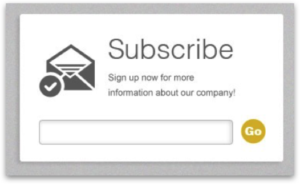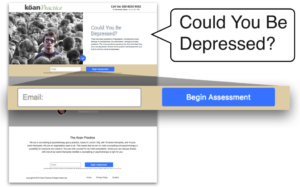The Ultimate Conversion Strategy For Dentists

What you’re about to read is a simplified overview of the dentist marketing system we use for selling higher-priced dental services.
The kind of system that turns a relatively small monthly marketing budget, into six-figures.
Let’s start from the beginning …
The way to look at your marketing system is as a funnel. In fact, I call this a conversion funnel.
Every website that sells a product or generates new leads will have a series of steps that people take before they become a customer. Whether it’s attempting to sign up for a service or purchase a product, these series of steps should lead to a conversion.
With a conversion funnel, we put in place a series of steps that are designed to increase the number of visitors into patients. The key to this process is understanding where we can improve and optimise the performance of the conversion funnel so that more and more people convert into patients.
To achieve this, the conversion funnel is divided into two main categories:
(1) The front-end
(2) The back-end
The front-end is marketing that is often done to prospects in an attempt to generate new leads. In other words, it’s the marketing done at the first interaction with a prospect and gets them acquainted with you.
The goal of the front-end is to turn visitors into subscribers.
By getting more and more of your prospects onto a subscriber list, you can build a relationship with your prospects, continue your marketing message communication, and over time you build their trust.
The “No-selling” Strategy
Front-end marketing is done with a “no-selling” strategy. This is key, and the driving force behind initiating a positive interaction with your prospects.
It’s a less threatening way to start the buyer/seller interaction because you are not pushing your services on your prospect … instead, you’re offering to give your prospect something of value for free. This is called a “lead magnet” and you exchange this for their email address.
The lead magnet is an ultra-specific solution for an ultra-specific market. It should offer one big thing or benefit instead of a lot of little things, or a lot of nothing, which is more often the case.
So for example, this is not a lead magnet …

This above example has little to no perceived value. So if it’s not considered valuable to your
prospect, the prospect won’t want it, and they won’t give you their email address in exchange for it.
Finally, the lead magnet should move your prospect down the “continuum of belief.” In other words, it should move them closer to becoming a patient.
So here is an example of a good lead magnet in the psychotherapy market:

Now, there are several web design elements that help boost the conversion rate here. But the main thing that makes this work the most is the lead magnet. And because the design is simple, it makes the message clear and tells the prospect what they’ll get from the lead magnet.
So the headline reads:
“Could you be depressed?”
Now for someone who thinks they might be depressed, this headline is ultra-specific to them.
It doesn’t mention the depression counselling service, or discounts, or anything like that …
It just asks a simple, but specific question which enters the conversation going on in the prospect’s mind.
Could you be depressed?
Then, the lead magnet promises to answer the question. Which is an online self-assessment quiz that allows the prospect to get an immediate answer to the question being asked.
And that was it. An invitation is offered to answer their biggest question. It’s just a small step that started the relationship.
Is this going to do the selling? No.
It’s the job of the “back-end” of your conversion funnel to do the selling.
When is the Right Time to Sell Your Services?
The time to “sell” is when you have your prospects’ trust. This is where the back-end of your conversion funnel comes into play.
The back-end of the conversion funnel is the marketing done to your subscribers on your mailing list. Its main purpose is to educate your prospects and get their trust, which then makes it easier for you to sell.
In other words, the back-end marketing is the marketing done to make the transaction and/or additional transactions.
You see, the back-end marketing process works by sending a succession of content-rich, highly credible, and educational emails that are delivered over a set period of time.
Remember—your prospects need more time to gather information, research the market, and develop trust in you. The back-end marketing system will accommodate this.
The email sequence will overcome all of your prospects’ common objections. They’ll become more acquainted with you and your process.
As they consume your content, they’ll naturally feel more comfortable with you and eventually, they’ll have trust in you.
For some prospects, this process can take just a few days, while others can take more time.
So, let’s show an example of how this can work … let’s say you sell a dental implant treatment for $5000, and let’s say you invest $2000 per month into a “traffic” generating source.
That $2000 spent on “traffic” brings you 170 visitors to your website, and because you’re using a “no-selling” strategy, you’re converting 30% of your visitors—rather than just the average 5% we see on most websites.
Which means in month #1 you have fifty new subscribers. So your front-end marketing has done its job. You have fifty warm, dental implant prospects on your mailing list.
Now it’s the job of your back-end marketing to turn these warm prospects into sales.
Of course, when you do this it’s important that you are still able to turn a healthy profit at the end. So, let’s say that the $2,000 per month investment resulted in at least three new patients (3 x $5000 = $15,000).
With three new patients, you get $15,000 back, and a complete return on your $2,000 media buy investment, which leaves you with $13,000. Deduct a further $2,000 in other costs of doing business and your total profit is $11,000.
Plus, you’ve acquired two new patients whom will become longer-term patients, providing you’ve impressed them with your service. Not to mention the other forty-eight subscribers you will continue your marketing communication with.
Most dentists don’t get this … They view all marketing the same, with the purpose of generating a profit from the first interaction.
But the savvy dentist will understand that it’s not about trying to get the sale from the first visit—it’s about starting a relationship.
When that relationship has developed—and they trust you—then they are more likely to buy from you.
Just think of it like this—the front-end is to acquire new relationships; the back-end is to generate profit.
Make sense?
Great!





